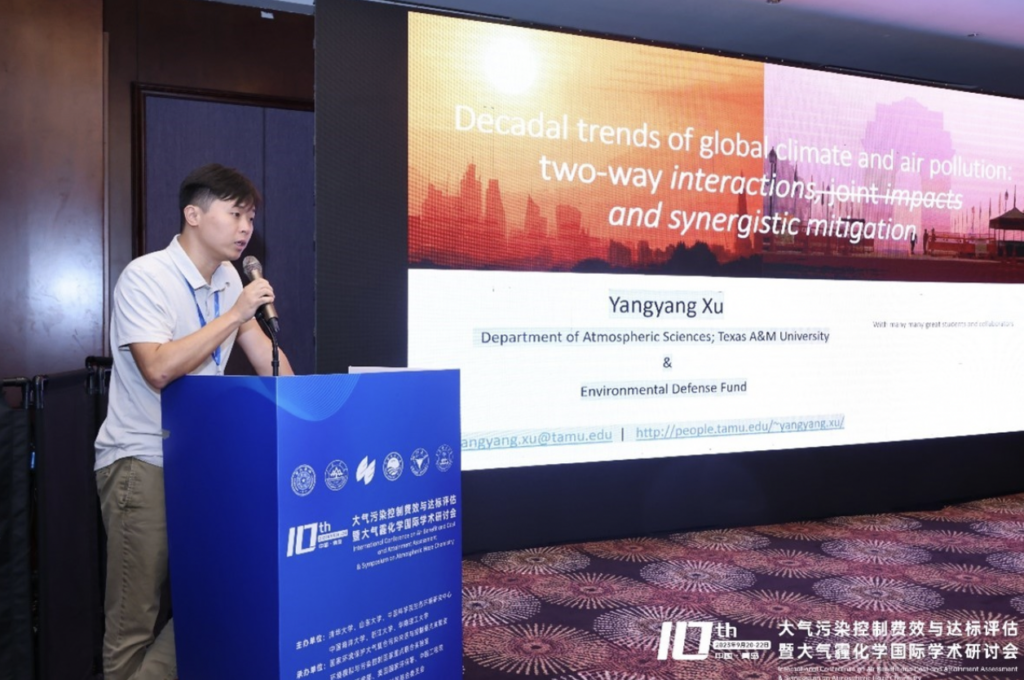
What’s new: EDF scientists, Hugh Li and Yangyang Xu, presented as keynote speakers at the 10th International Conference on Air Benefit and Cost and Attainment Assessment (ABaCAS) in Qingdao, China this September. At ABaCAS, they shared insights on how to optimize cost-effective sensor technology and on the importance of approaching climate change and air pollution as interconnected problems.
Why it matters: ABaCAS is a leading global forum for sharing the latest technology for monitoring and mitigating air pollution. By presenting there, Li and Xu were able to draw from EDF’s global experience in novel air quality monitoring to help other researchers and policymakers track air pollution more efficiently and target sources more effectively.
Presentation on air quality sensors: Low-cost particulate matter sensors have revolutionized air quality monitoring in recent years. Li presented research on ways to calibrate these sensors to overcome some of the challenges associated with using them, such as less accurate data. In particular, he explained how post-calibration strategies can improve the accuracy of the original data generated by the sensors.
Next steps: In his presentation, Li encouraged using low-cost sensors in diverse environments and near various sources to better understand their performance. He cited EDF’s past monitoring work in Oakland, CA and London, UK as examples of this practice.
Presentation on climate change and air quality: Yangyang Xu’s presentation described the two-way feedback loop that exists between global warming and air pollution, especially how aerosols worsen air pollution even as their potency is boosted by rising temperatures. Xu emphasized how both heat extremes and air pollution exacerbate each other, undercutting human health and crop yields. However, he also underscored how action to current warming rates is likely to result in better air quality.
Go deeper: Read more about Xu’s research here.
